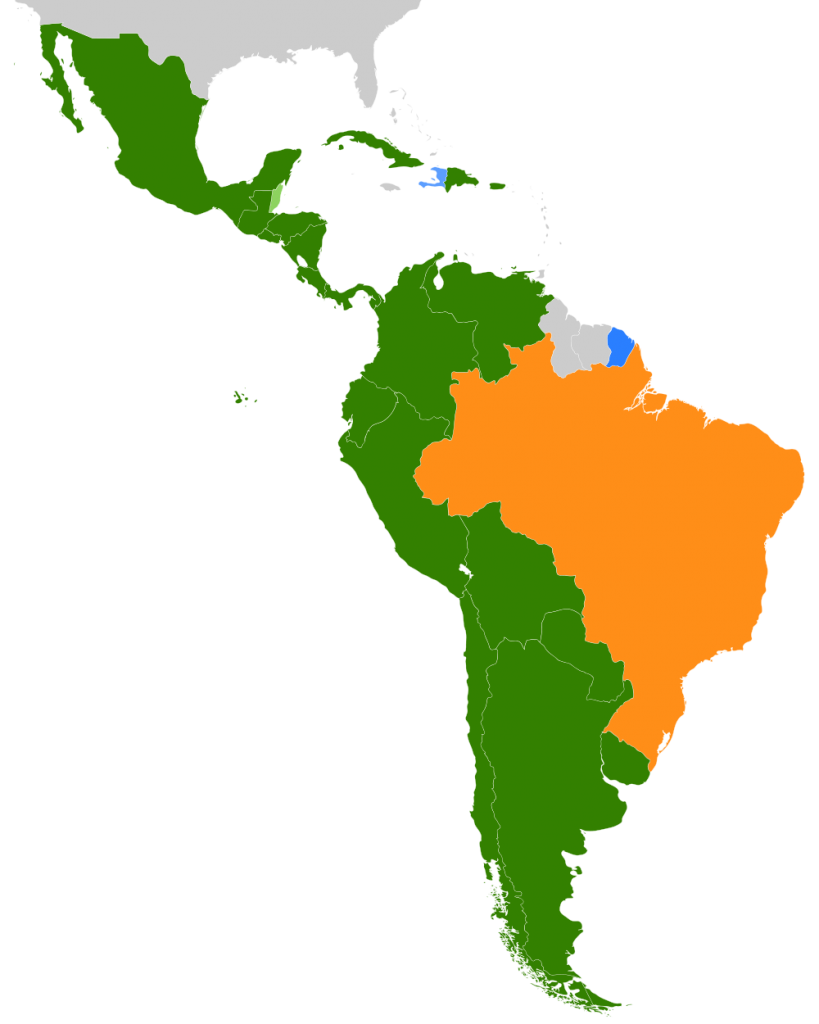Latin America’s “golden decade” of growth, fueled by a global credit bubble and commodity boom, has faded and now the countries of the region are facing difficult questions about their economic future.
As a result of that decade of strong growth, “structurally, Latin America is a different region today, but it’s at a crossroads,” said Augusto de la Torre, the World Bank’s chief economist for Latin America and the Caribbean.
The problem is that “there is no way in the world Latin America can continue delivering the same level of services it did in the high-growth years,” said de la Torre, who was the keynote speaker Thursday at the University of Miami Center for Hemispheric Policy’s Ninth Annual Latin America Symposium at the Conrad Hotel in downtown Miami.
After economic growth of 5.9 percent in 2010 and growth that topped 4 percent in 2011, the outlook is no longer as sanguine.
The Economic Commission for Latin America and the Caribbean is predicting 2.7 percent growth for the region this year — slightly better than 2013’s 2.5 percent. But some of the region’s large economies are looking anemic: Brazil (projected growth of 2.3 percent) and Argentina (1 percent). The Venezuelan economy is forecast to shrink by 0.5 percent.
Now the region will have to find a “source of growth within their own countries” because they can no longer count on the global tailwinds of positive commodity and credit cycles, said Tony Volpon, who heads emerging-market research for the Americas at Nomura Securities International.
In this current “low-growth period,” Latin America also will face special challenges if current pessimism about the world economy proves to be true, said Volpon.
Despite the slowdown, de la Torre does not see Latin America going back to its previous cycles of instability and financial crisis.
“I think Latin America has built a better immune system,” he said.
But a key factor going forward, said de la Torre, will be creating greater access to opportunity for all Latin Americans and eliminating the perception that society is rigged against those who are born poor.
One way to do that is by improving the public education system. “In Latin America, our public education system stinks,” de la Torre said bluntly.
Ironically, the pillars of the region’s success over the past 10 to 15 years are now putting it in a “predicament of which there is no easy way out,” said Jorge Castañeda, former Mexican foreign minister and now a professor at New York University.
As Latin America has become more democratic and the fruits of its success have been more equitably distributed, it has given rise to a larger middle class and reduced poverty, he said. That, in turn, has created rising expectations at a time when economic growth is slowing.
Meanwhile, democratic institutions that worked well in elections are now perceived as “ineffective in dealing with popular demands,” and people are getting “fed up with corruption,” Castañeda said.
In Brazil, for example, he said, people feel they pay high taxes and get “Fourth World-style services.”
“These things lead to the frustration and anger of the middle classes,” Castañeda said.
In Brazil, that has brimmed over into massive street protests aimed at everything from government corruption and the poor quality of public education and healthcare to the high costs of preparing for the next month’s World Cup soccer championship.
Latin America societies, he said, are more intolerant of inequities now — although they are probably more equitable now than at any point in their histories, Castañeda said.
Once Latin countries figure out how to reignite growth, they will find that if they don’t also improve social institutions, their growth will not be sustained, de la Torre said.
